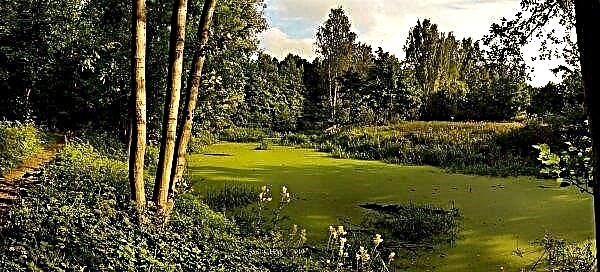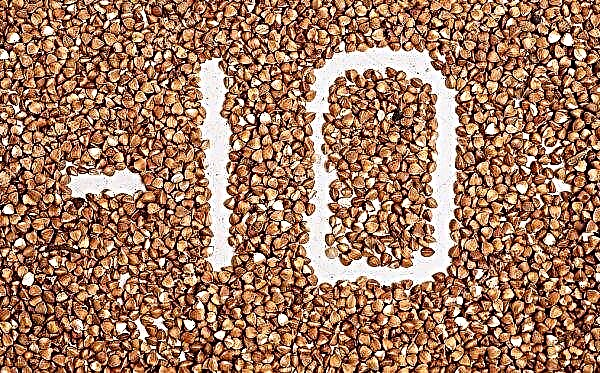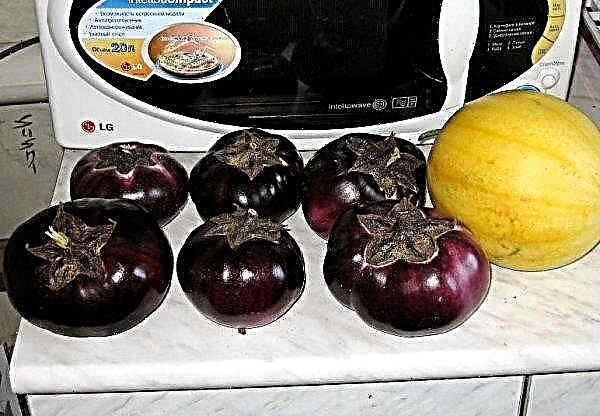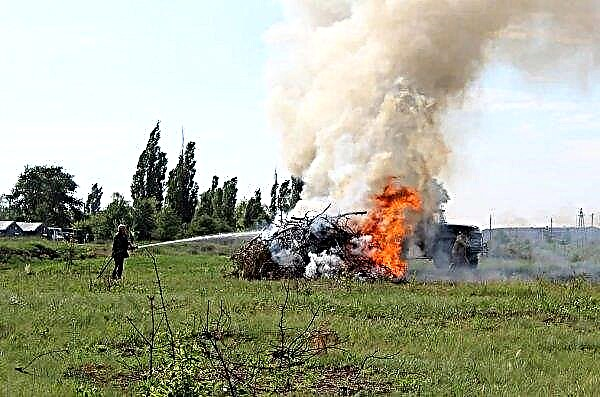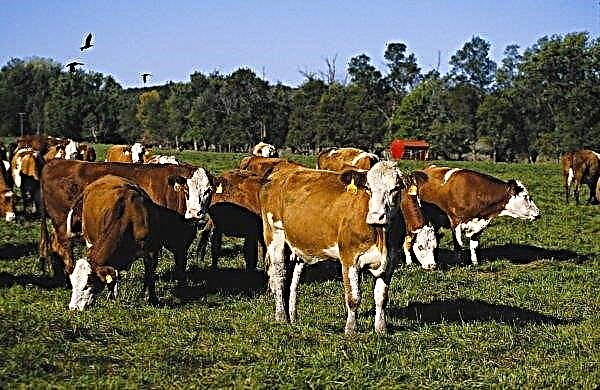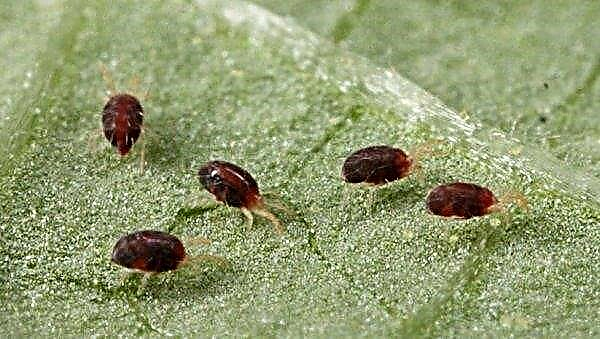Gardeners use greenhouses to grow early vegetables and greens. These facilities require care both in summer and in winter. How to remove snow from a polycarbonate greenhouse - we will describe in detail later in the article.
Why clean the snow
In order not to bother with dismantling, and then assembling the greenhouse, many gardeners practice non-separable structures. The most popular greenhouses are made of arched polycarbonate. It is quite durable material and practical to use. The surface of such structures is smooth, so at first glance it seems that the snow itself should slide off from them.
Did you know? To green the Sahara desert, greenhouses are created in which water is irrigated with distilled water from the sea. Solar energy is used for distillation..
But this does not always happen, because inside and outside the structure there are different temperatures, and this often causes snow to stick to the surface. For this reason, it accumulates in the greenhouse and can cause its deformation.

Many manufacturers of polycarbonate greenhouses claim that their products can withstand a sufficiently thick layer of snow, so there is no need to clean it. However, for example, in a very snowy winter, a lot of snow can simply accumulate on the roof of the greenhouse, and this can lead to deformation of the polycarbonate sheets and the frame.
When is the procedure necessary?
How often it is necessary to clear the polycarbonate surface of the snow cover is treated differently. Some people think that a small snow layer is harmless and you don’t need to remove it - it protects the structure from sudden temperature changes, since without snow, polycarbonate heats up during the day and cools at night.
The result of such temperature jumps is the formation of condensate, which turns into ice, which harms the greenhouse. Others, on the contrary, are of the opinion that it is necessary to remove snow of any thickness from the greenhouse. This is justified by the fact that it is easier to remove a small layer, the snow will not freeze to the surface, gradually accumulate and compact.
Important! The layer of snow, caking, becomes dense and heavy. In addition, it easily absorbs water, and this also adds mass to it. All this greatly complicates the cleaning and can be dangerous for the greenhouse design.
If you have the opportunity to constantly monitor the greenhouse (it is close), then it is better to conduct regular cleaning of the snow cover. But if the building is far from you and there is no possibility of regular cleaning, then you need to visit the greenhouse from time to time and carry out the necessary manipulations.

From the foregoing, it follows that the mandatory cleaning of snow must be done after heavy snowfalls or after several minor precipitation.
How to remove snow from a polycarbonate greenhouse: basic methods and devices
Having decided to start cleaning the polycarbonate structure from the snow cover, you need to decide on the cleaning method and improvised devices.
Easy ways
Simple methods are effective when there is little snow accumulated:
- For cleaning, you can easily tap your hand on the surface so that the snow layer slides away from the vibration itself.
- If the snow layer has managed to freeze to the surface, heating of the greenhouse from the inside is applied. This can be done using a gas burner, dry fuel tablets or other suitable method. As the temperature inside the structure rises, the snow layer melts and slides.
- You can also cover the structure with plastic wrap for the winter, so that you can easily shake off the snow layer from it. The film should be well fixed so that it is not blown away by the wind.
Dangerous Tools
Most often, gardeners resort to the use of any devices, i.e., they practice mechanical cleaning. Assuming polycarbonate is a stable and durable material, some use hard or sharp objects, which can damage the coating. Their use is strictly prohibited.
 Do not clean polycarbonate structures with metal shovels or hard scrapers, brushes and brooms (that is, anything that can scratch the surface of the material).
Do not clean polycarbonate structures with metal shovels or hard scrapers, brushes and brooms (that is, anything that can scratch the surface of the material).
Safe Tools
Snow cleansers that will not damage the polycarbonate coating can be purchased at the store or made by yourself:
- A convenient cleaning tool can be floor mop with soft rubber nozzle. Among the many advantages of this thing is that it is light, with a fairly long handle and allows you to capture a wide layer of snow at a time.
- Synthetic broom - also a very suitable device. Its pile will ensure uniform cleaning and will not damage the polycarbonate UV layer. But such a procedure is effective only if the snow layer is not thicker than 10 cm. With a larger volume, it will be difficult to work with a broom.
- A cleaning device can also be made from improvised means. For example, take a needle rubber mat and attach to it on both sides of the rope. Such an invention must be thrown into the greenhouse and pulled along its surface. It is better to carry out this action together, or to improve the tool by attaching its ends to a wire stretched along the greenhouse (to simplify the movement, a roller is mounted on the end that slides along the wire).
- You can also independently design a device like a mop, chipped with rubber (to prevent scratching).
Important! In order for the polycarbonate greenhouse to withstand the load, the sheets of material should be at least 6 mm thick and the distance between the arcs should be 0.5–0.6 m. And the most important condition is a metal frame made of square pipes.
Using these, as well as other (as far as imagination allows) devices, it is possible without special difficulties, and without damaging the surface of the greenhouse, to remove the snow cover from the structure.

